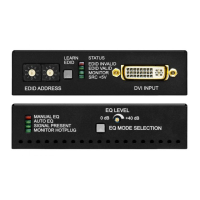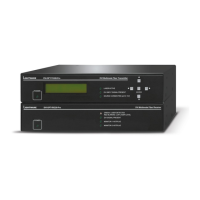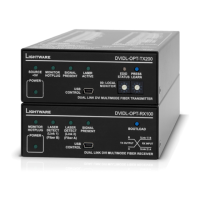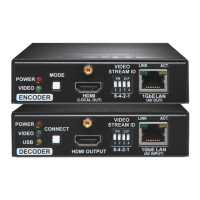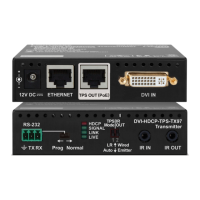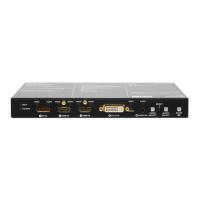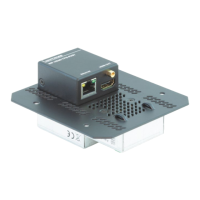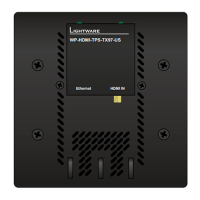EDID Menu
EDID menu
EDID Memory Structure
#edid
▪ Factory EDID list (F1-F#
▪ Dynamic EDID list (D1-D#) shows the EDIDs of the display devices connected to the output ports. The
device stores the EDID of the sink connected to each output port for the last time, thus, there is an
EDID shown even if there is no display device attached to the output port at that moment.
▪ User memory locations (U1–U#
▪ Emulated EDID (E1-E#
displays the memory location where the current EDID is routed from.
EDID Operations
Changing Emulated EDID
Step 1. Choose the desired EDID list on the source panel and select an EDID.
Step 2. Emulated button on the top of the Destination panel.
Step 3. port
Step 4. Transfer
Learning an EDID
the User button. Thus, one or more EDIDs can be copied into the user memory either from the factory memory
or from a connected sink (Dynamic).
Exporting an EDID
Step 1. EDID
Step 2. Export
Importing an EDID
Step 1. Usermemory slot.
Step 2. Import
Step 3. Open button. Browsed EDID is imported into the
ATTENTION! The imported EDID overwrites the selected memory place even if it is not empty.
Deleting EDID(s)
Step 1. User button on the top of the Destination panel.
Step 2. memorySelect All and
Select None
Step 3. Delete selected button to delete the EDID(s).
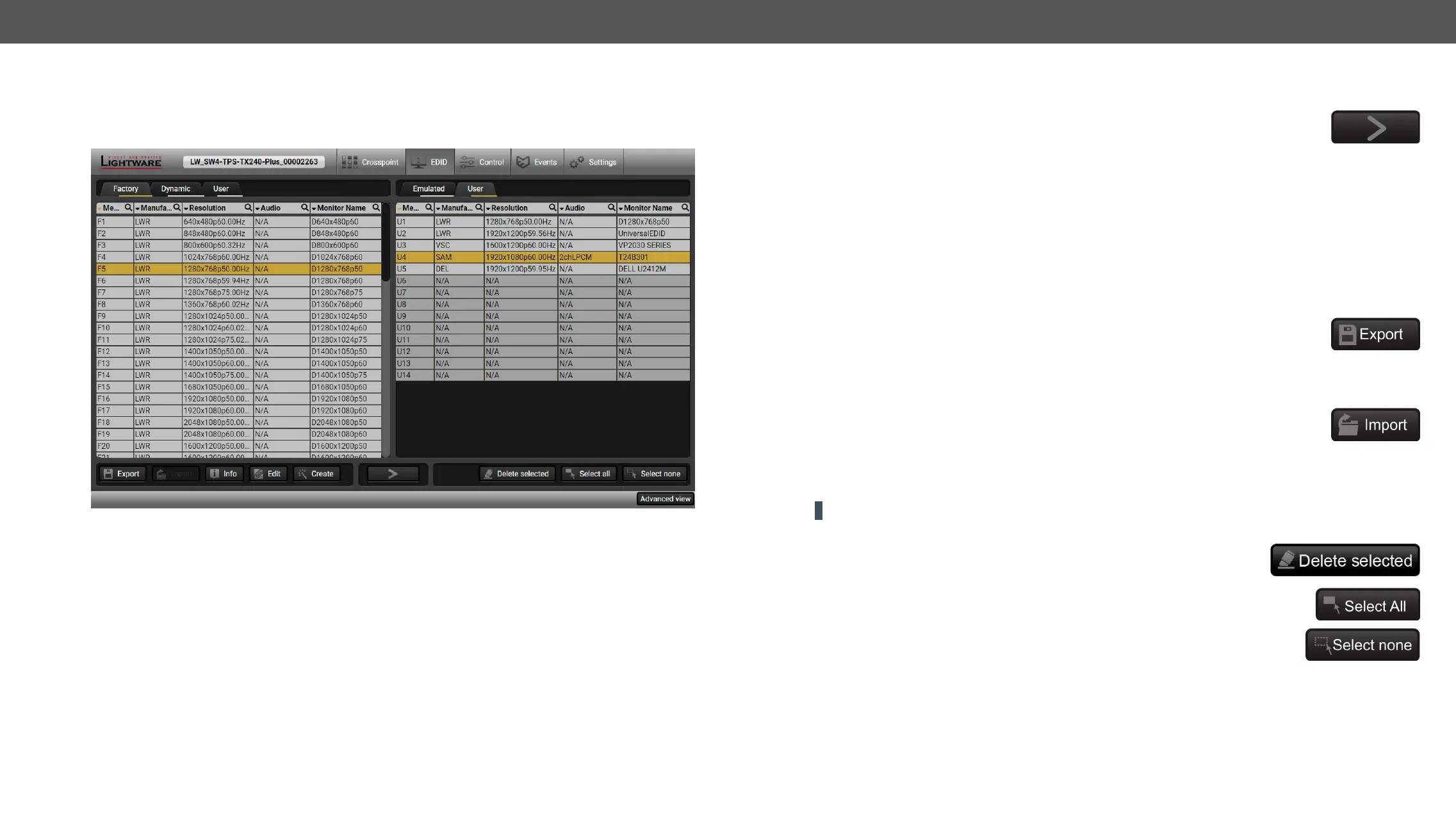